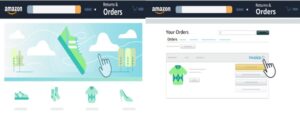VAT Rules for Dropshipping
What is dropshipping business?
Dropshipping business is a retail fulfilment method where your Ecommerce business does not keep any produce in stock. Instead, when you sell a high profit dropshipping products, you purchase the item from a third party and then have it shipped directly to the customer. You never actually see or handle the products.
The main difference between drop shipping and a typical retail business model is that you do not hold your own stock. Instead, you purchase stock as and when required from a third party. This is usually a wholesaler or manufacturer who then fulfil orders. This method is used extensively by seller using online marketplaces (OMP) like Amazon or eBay.
Where is the place of supply?
The VAT rules for dropshippers are currently governed by the VAT place of supply rules. In short, the place of supply of the goods determines the VAT treatment. We would mention these rules may change depending on the outcome of Brexit.
If you are drop shipping from outside of the EU into the UK, then the place of supply is deemed to be where the goods are shipped from. So, for example, if the place of supply is China, VAT will not be due on the sale of the goods.
Goods imported into the UK from outside the EU.
Whenever goods are imported into the UK from outside the EU Import VAT and duties will potentially apply. For more details on import VAT see here.
The person who is the importer on record is responsible for the import VAT. If it is your business, then you will be liable to pay the import duties and VAT. If it is your customer, then they will be responsible for paying any import duty and VAT.
Dropshipping model for Import tax
If you are setting up as an dropshipping model in the UK, you will need register with HMRC as you may be required to pay Customs Tax. For a package that is worth more than £18, this could be as much as an extra £8-£15 to get it to your UK customer’s doorstep.
Bear in mind when setting your pricing in every country that is relevant. You may need to add a note to your product pages. It explicit in your terms and conditions and any other relevant pages throughout your site.
Also, you may also want to reconsider your inventory’s suitability to be part of a drop shipping model. For example, if it is a deemed a ‘low value’ good, you may not be required to pay an additional tax. However, a bigger site could supply the same product in half the time it takes for you to ship it. You may find that lower value, customised and unique goods may be a more profitable fit.
Planning your tax and being clear on your business plan. The dropshipping profitable margins should be just as much a priority as your branding and marketing.
What about goods imported into the EU from outside the EU?
If you are selling goods on an online marketplace (OMP) like Amazon or eBay it is possible, you will make sales to customers to the EU as well. So, what is the position there?
If goods are being delivered to an EU countries from outside of the EU. The import VAT and duties are payable at the appropriate rate for the EU country concerned either by the customer or potentially by the business. If the latter case applies, you should also be mindful as to whether the EU distance selling rules apply to your business.
Just to reiterate, if your customer is the importer on record then they are responsible for paying any import duties and VAT.
Customs may hold back on releasing goods until the dropshipping VAT has been paid meaning your customers may not receive their goods until they have paid the VAT.
Therefore, we would strongly recommend that you make this clear to your customers when they are purchasing from your website.


